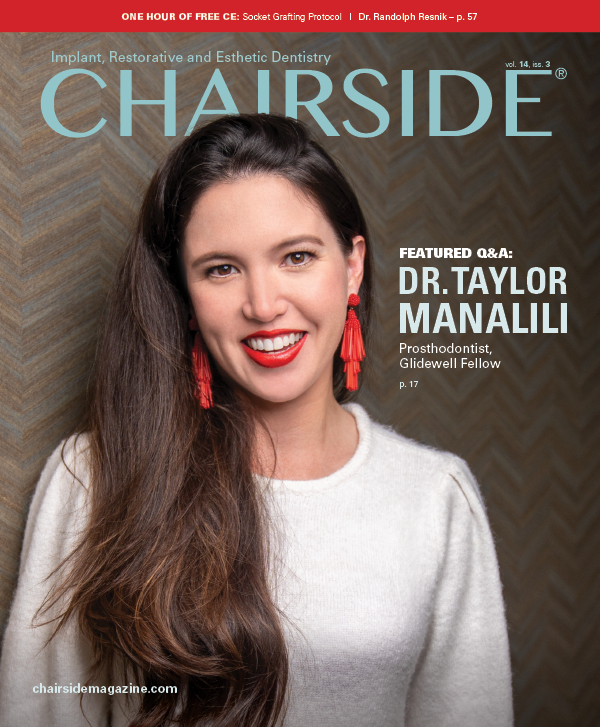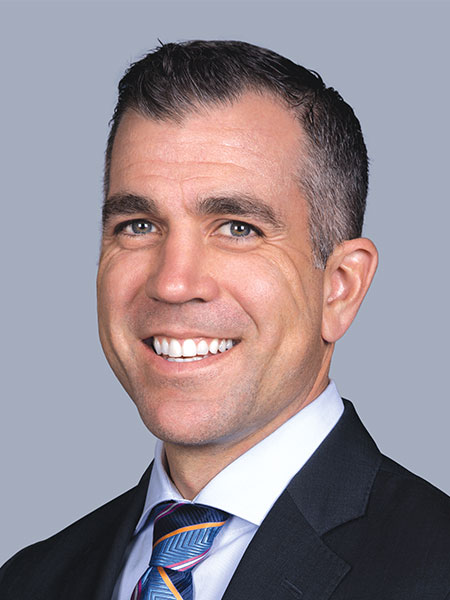Something to Smile About: A BruxZir® Esthetic Case Report

One of the privileges of practicing dentistry is to participate in the recovery of a deserving patient. One such patient was a 75-year-old gentleman who drove almost three hours from his West Texas ranch to proudly inform me that he had fully recovered from esophageal cancer and was ready to address his smile, which had been compromised by his aggressive cancer treatment.
The patient’s recent treatment, coupled with his past medical history, precipitated development of xerostomia, which contributed to the deterioration of his existing restorations and necessitated a stronger, more permanent esthetic solution. I suggested something strong enough to withstand the test of time and occlusal forces, but that could also give the patient a smile befitting his joyful disposition. With BruxZir® Esthetic, we were able to achieve the best of both worlds.
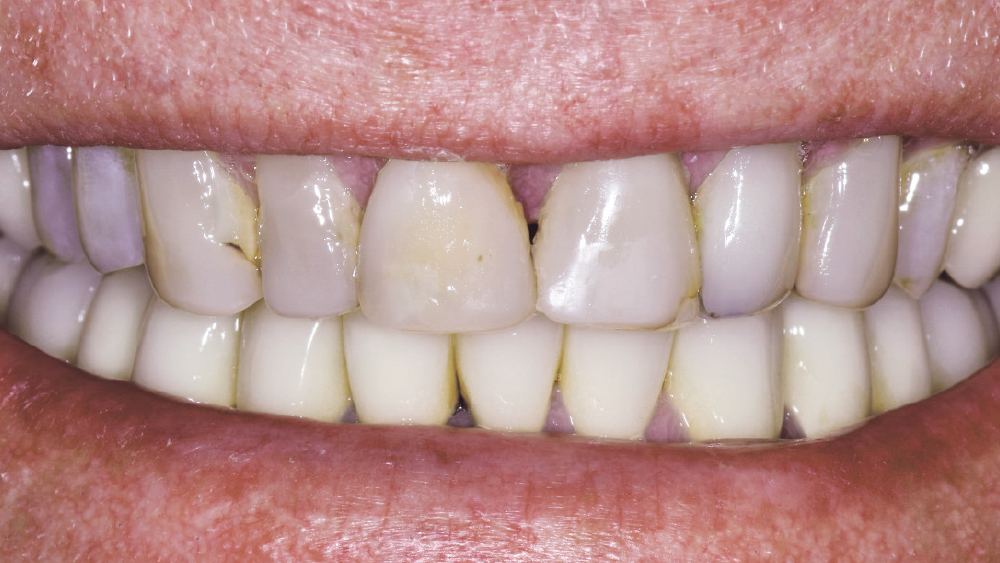
Figure 1: The patient’s upper anterior restorations were functionally and esthetically compromised, and exhibited secondary caries resulting from xerostomia caused by his cancer treatment. The existing restorations and all caries were removed as the first part of the restorative process.
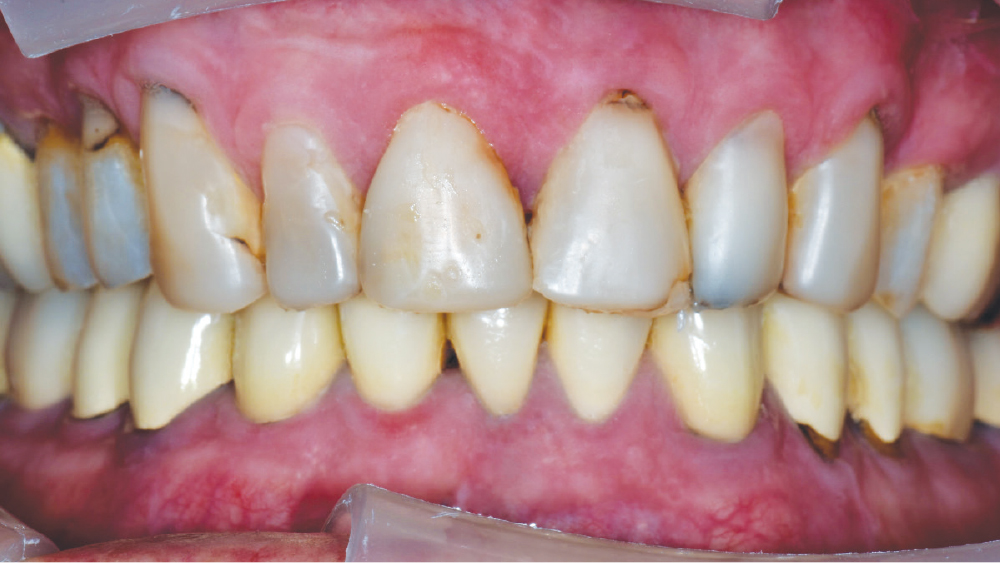
Figure 2: This retracted facial image illustrates the considerable esthetic challenges in this case. Beyond addressing the dental health and functional needs of the patient, our course of treatment offered the opportunity to greatly improve upon the patient’s existing esthetics by using state-of-the-art restorative materials.
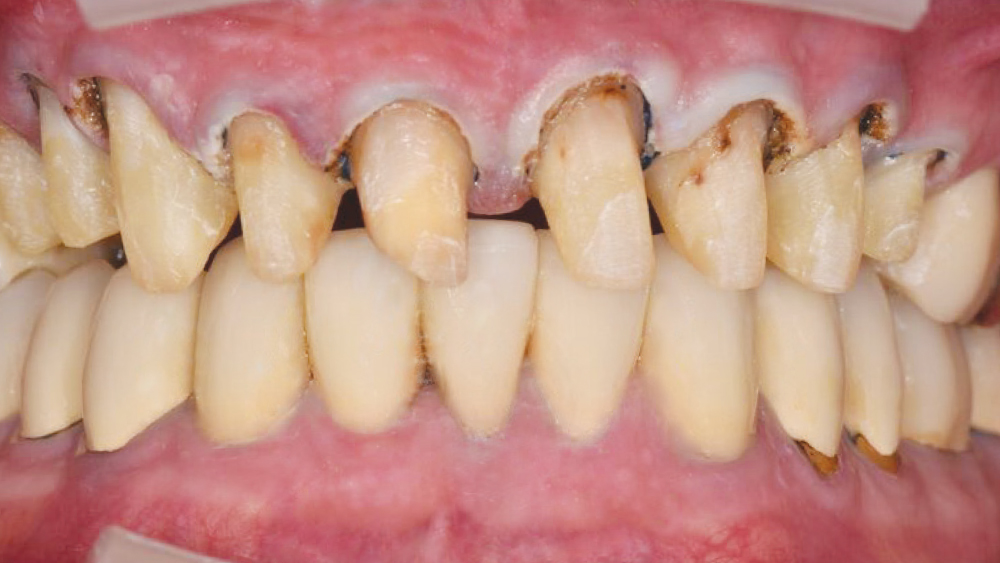
Figure 3: Due to the size of the existing restorations and secondary caries, the optimal treatment plan was to place individual crowns on #4–12. Additionally, because the patient had some limitations to his range of motion, I wanted to minimize his time in the dental chair. For that reason, I felt the ideal solution would be a restoration that did not require adhesive bonding and could be seated with a self-adhesive resin cement. BruxZir Esthetic crowns offered this flexibility along with the strength needed and uncompromised esthetics.
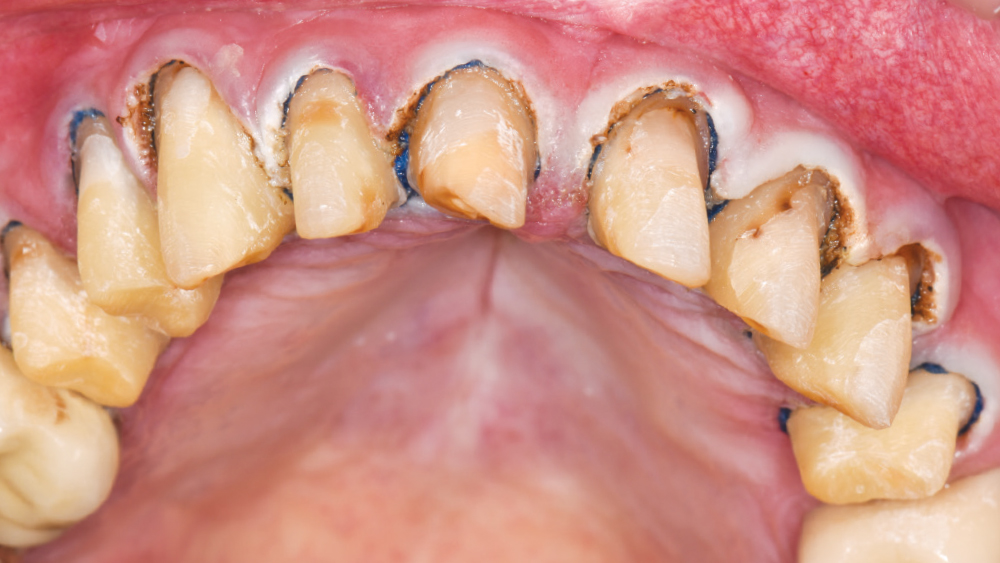
Figure 4: The gingival tissue was lasered using a diode soft-tissue laser, and cord was packed around the preparations to ensure visibility of the margins for the intraoral scan.
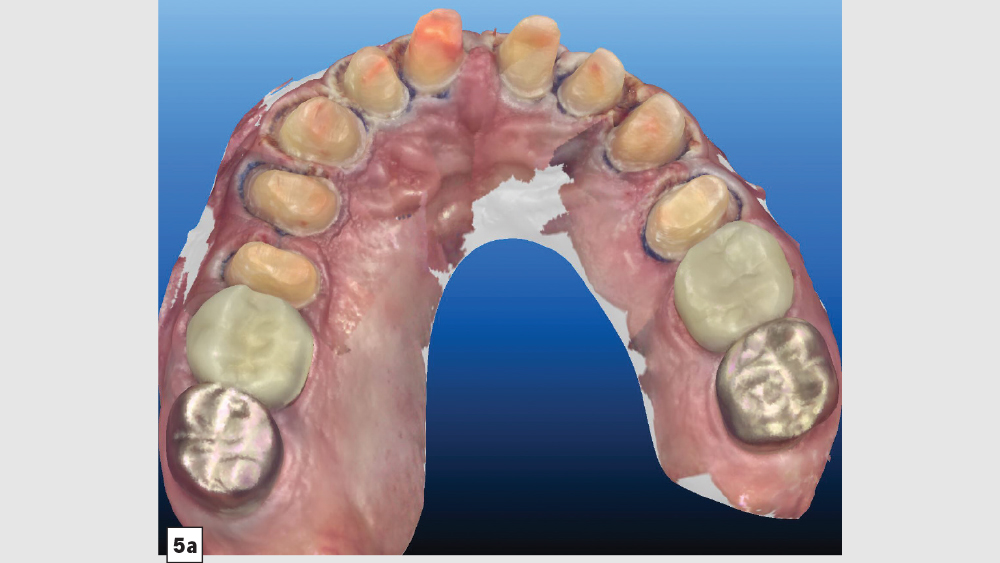
Figures 5a, 5b: As a digitally inclined practice, we had some options with regard to how these crowns would be fabricated. After taking an intraoral scan with the iTero Element® 2 Intraoral Scanner, we had the option to 1) mill the crowns in our office with the glidewell.io™ In-Office Solution, or 2) send the scan to Glidewell Laboratories with the push of a button. In this case, the numerous restorations involved and the esthetic challenges presented definitely called for the expertise of the lab technicians at Glidewell.
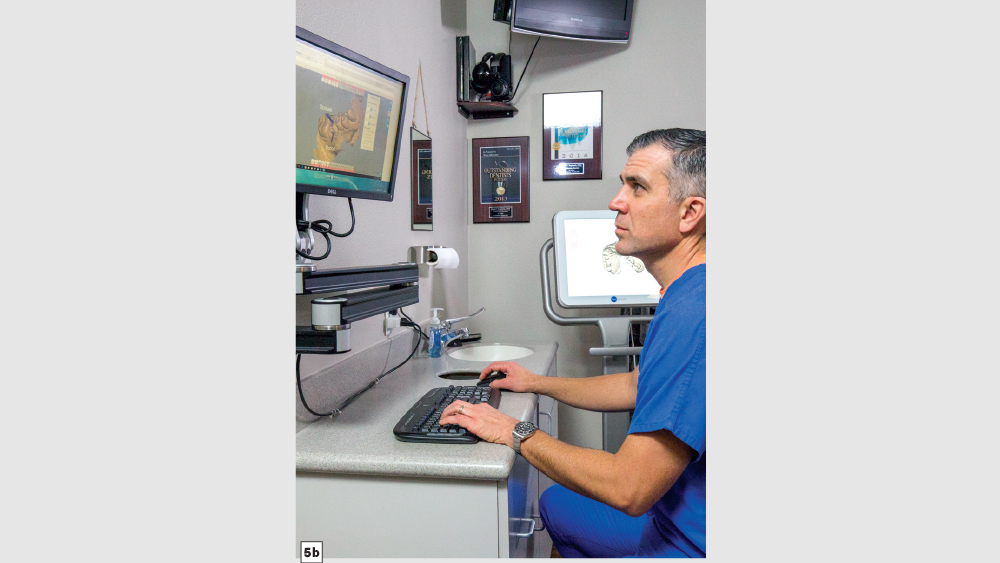
Figures 5a, 5b: As a digitally inclined practice, we had some options with regard to how these crowns would be fabricated. After taking an intraoral scan with the iTero Element® 2 Intraoral Scanner, we had the option to 1) mill the crowns in our office with the glidewell.io™ In-Office Solution, or 2) send the scan to Glidewell Laboratories with the push of a button. In this case, the numerous restorations involved and the esthetic challenges presented definitely called for the expertise of the lab technicians at Glidewell.
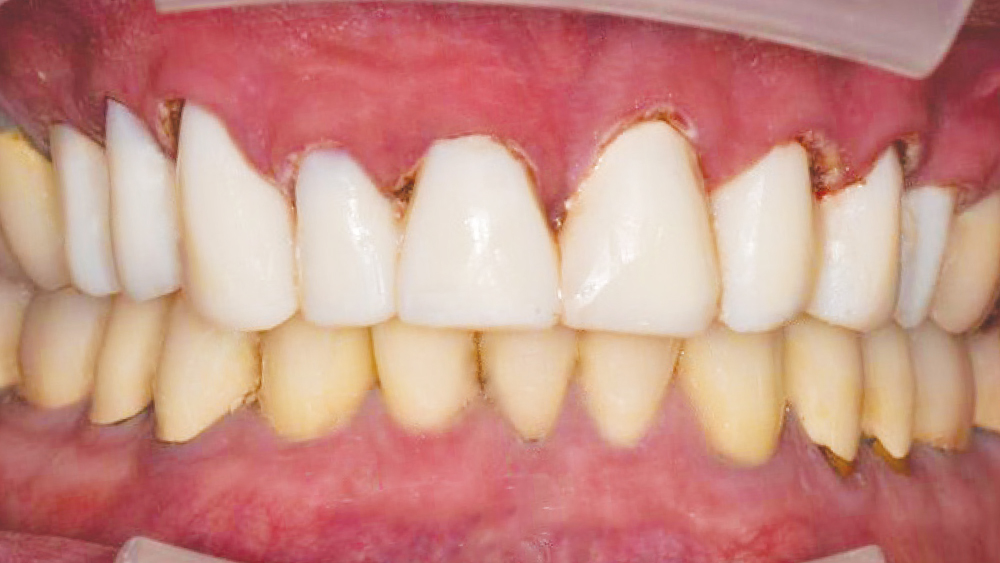
Figure 6: I placed bisacryl temporary restorations, which were fabricated using a matrix prior to performing the preparations, to serve the patient while the new crowns were produced by the lab.
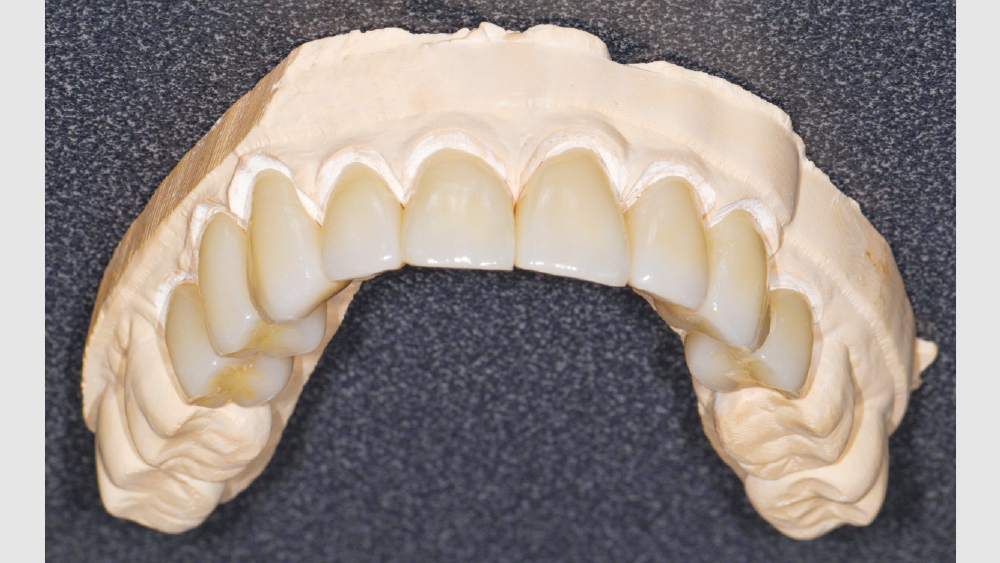
Figure 7: The patient’s BruxZir Esthetic crowns were milled at Glidewell Laboratories and shipped back to my office.

Figure 8: Seating of the restorations on teeth #8 and #9 alone illustrates the dramatic improvement in the patient’s appearance with BruxZir Esthetic. By seating the centrals first, the accuracy of the design is confirmed and relayed throughout the arch. The improvement in translucency and shade adds to the revitalization of his smile.
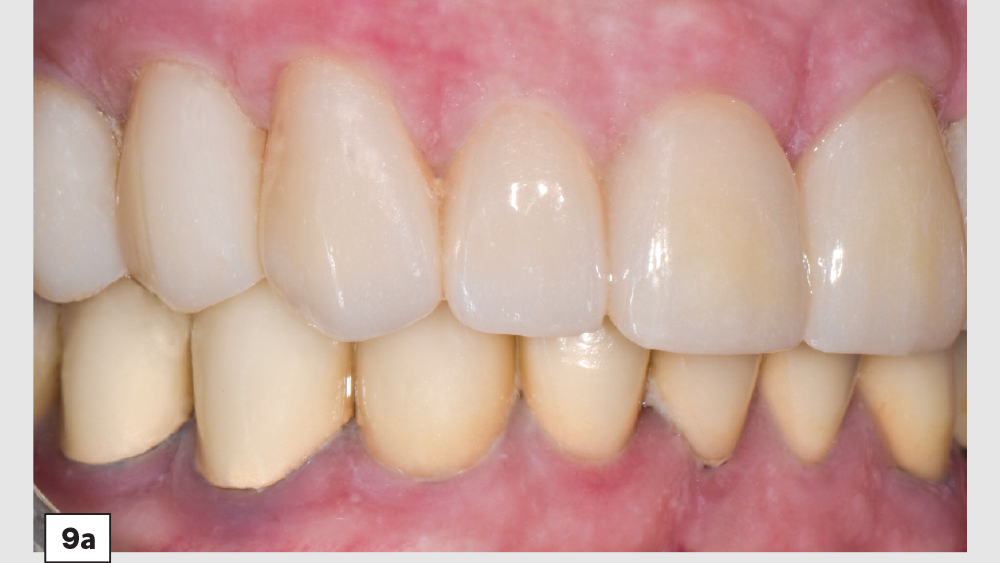
Figures 9a, 9b: Note the significant improvement in soft-tissue contours and the overall esthetics of the BruxZir Esthetic restorations.
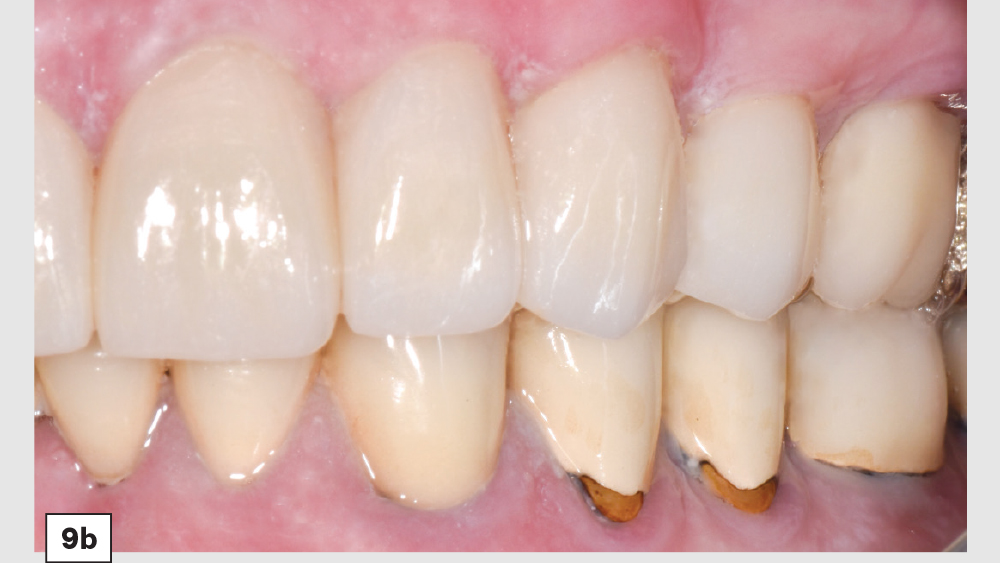
Figures 9a, 9b: Note the significant improvement in soft-tissue contours and the overall esthetics of the BruxZir Esthetic restorations.
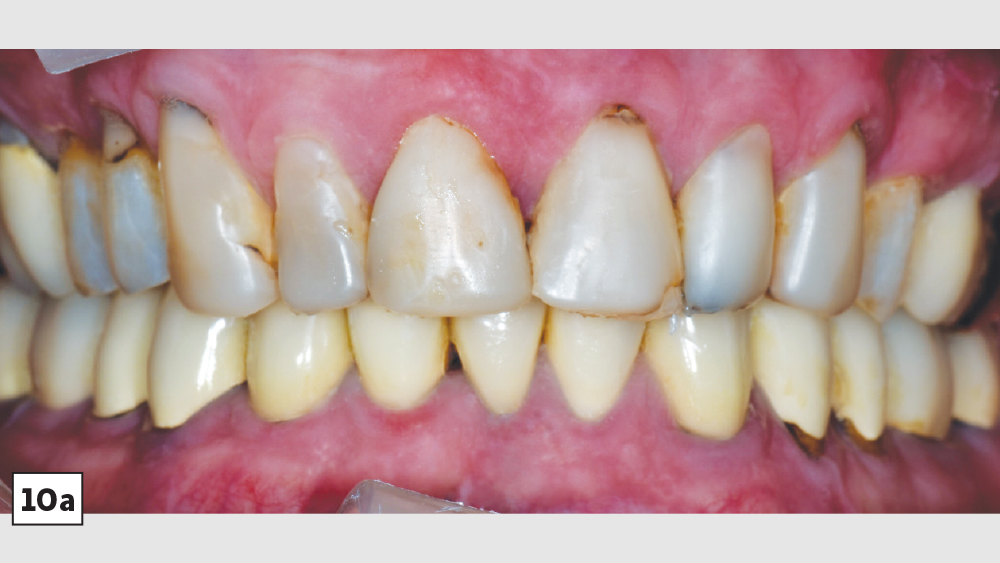
Figures 10a, 10b: Before and after shows the full rehabilitation of form and function for the patient’s upper teeth.
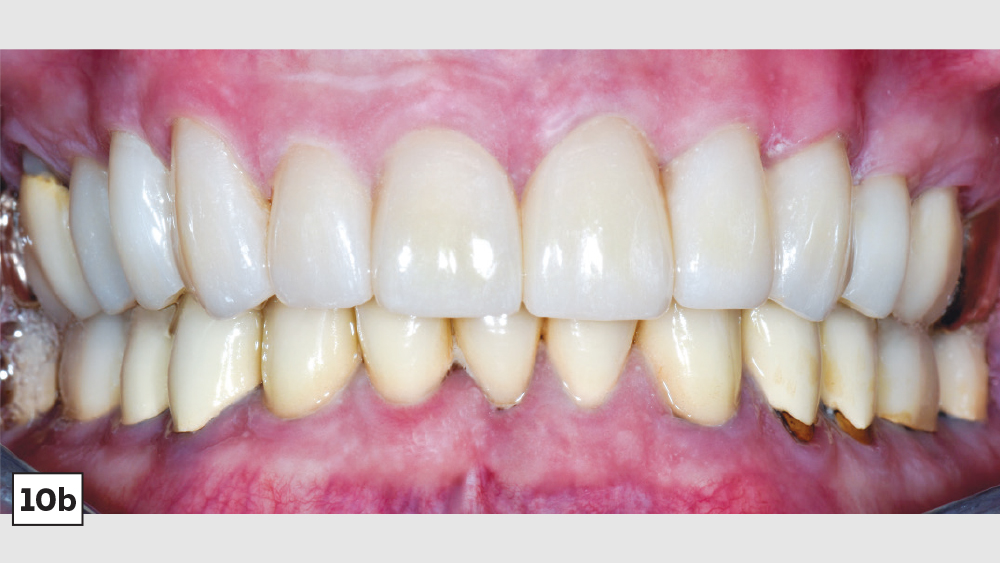
Figures 10a, 10b: Before and after shows the full rehabilitation of form and function for the patient’s upper teeth.
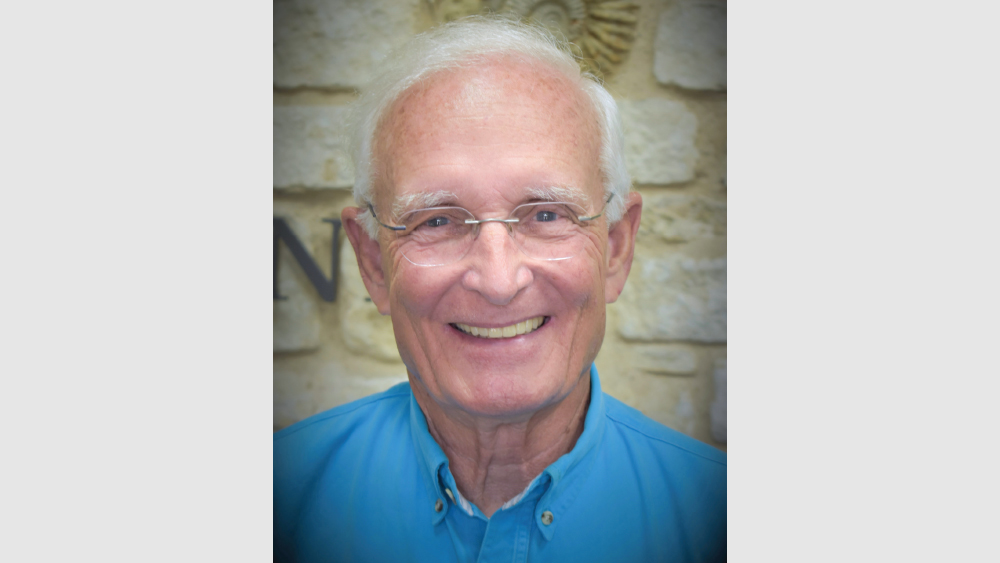
Figure 11: The satisfied patient, post-op.
- 1
- 2
- 3
- 4
- 5
- 6
- 7
- 8
- 9
- 10
- 11
- 12
- 13
- 14
CONCLUSION
The patient was so pleased with his BruxZir Esthetic restorations that he plans to make the long journey to my office again later this year to have his lower teeth restored.
iTero Element is a registered trademark of Align Technology, Inc.

